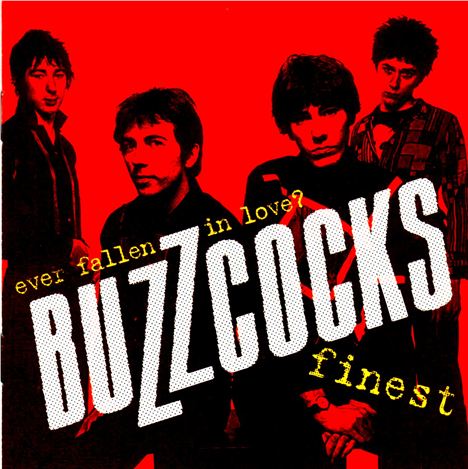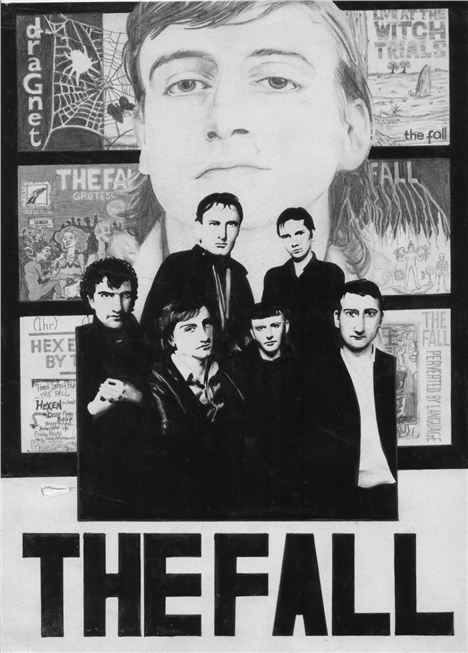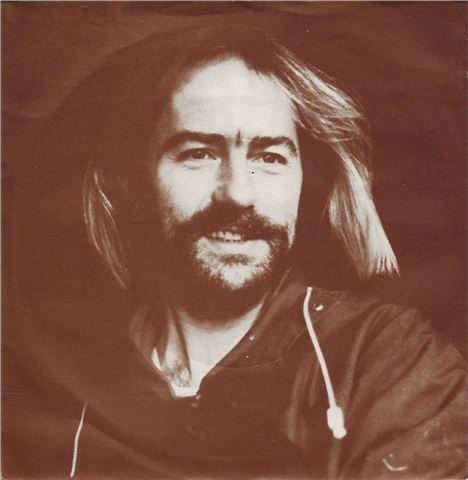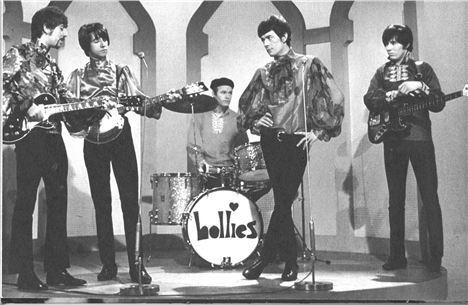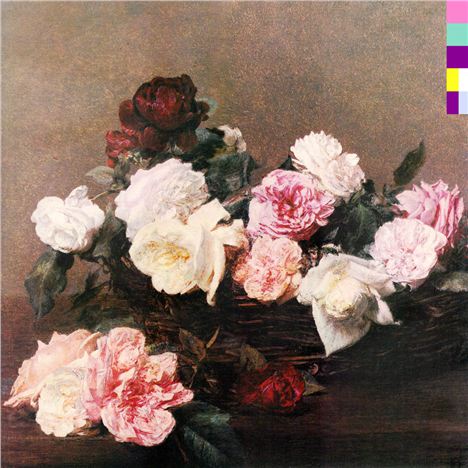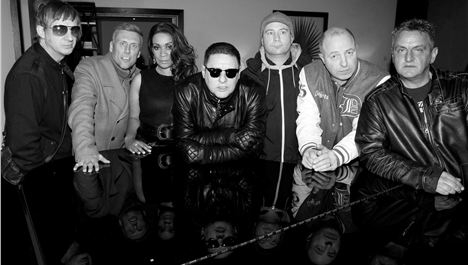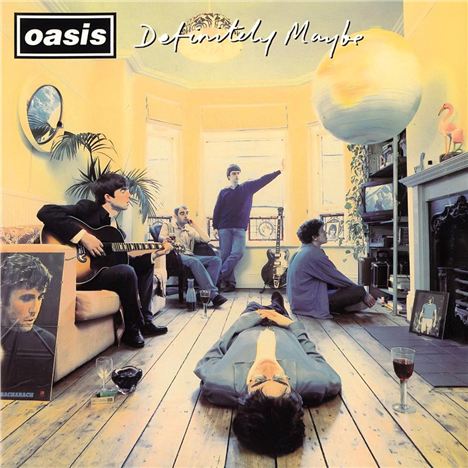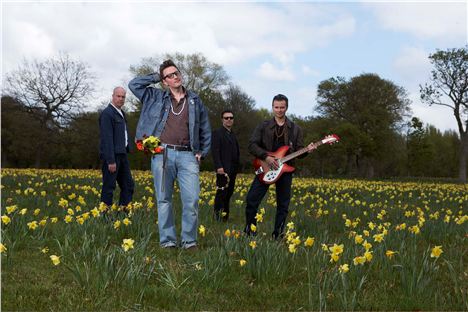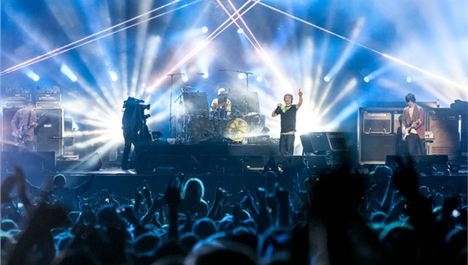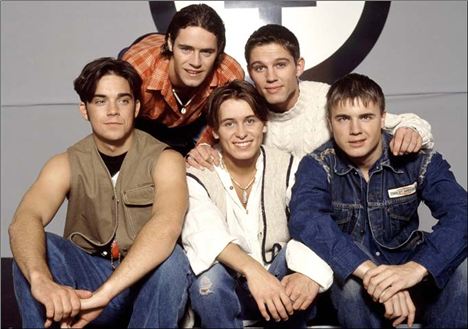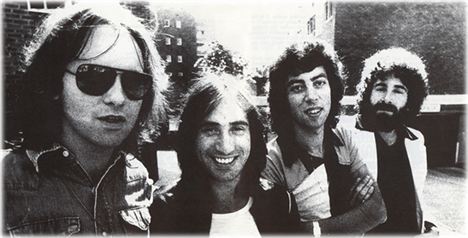THESE bands and one individual are in alphabetical order, not in ranking order. We've included other famous Manchester names underneath this one in a yellow box. If you think we've missed some obvious choices, promoted the worst and relegated the best, let us know in the comment boxes below.
The Buzzcocks/ Magazine
Not strictly the same band but enough overlap to place them in the same bracket. Meeting as students during their time at the Bolton Institute of Technology Peter McNeish and Howard Trafford, bonding over their new found love for ground breaking punk rockers The Sex Pistols, forged their own punk legacy in Manchester as The Buzzcocks under stage names Pete Shelley and Howard Devoto. One of the premier acts of the punk movement The Buzzcocks brought the phenomenon to the North through not only their playing but arranging The Sex Pistols first gigs at the Manchester Free Trade Hall. Soon after the Buzzcocks garnered mainstream success Howard Devoto left to follow his larger musical ambitions with Magazine - infusing the energy of punk with a new experimental approach. Their debut, ‘Real Life’, soon became a classic of the post punk landscape influencing the likes of Franz Ferdinand and the Klaxons to name a few. Devoto and Shelley were instrumental in not only bringing Punk to the forefront of the country in 1976 but also left a successful blueprint for the bands of tomorrow.
Alternative Classics: ‘The Light Pours Out of Me’, ‘Because You’re Frightened’ and ‘My Tulpa’. (Magazine) & ‘Harmony in My Head’, ‘What Do I Get’ and ‘Promises’. (The Buzzcocks).
Ever Fallen In Love With Singles' Sleeves
The Fall
Before Morrissey became the Pope of Mope it was Mark E. Smith who was the premier miserable Mancunian. With 30 albums in as many years the only constant of the post punk band is the enigmatic Smith who helpfully cleared up who or what constituted The Fall by declaring “If it’s me and your granny on bongos, then it’s [the] Fall”. Smith and his ever changing line up never broke into the musical mainstream but have a faithful cult following, who count the late radio DJ John Peel amongst their ranks- in fact Peel summed up The Fall beautifully when he said “They are always different, they are always the same”. Aggressive, bold, irregular, free of any sort of musical formula Smith has forged a career out of his clever wit, cutting social observations and ever changing style. Not for everyone but The Fall are held in high regard for their unflinching approach and Smith’s lack of willing to conform or sell out. Any fear of Smith going soft with age were put to rest when he recently branded Mumford and Sons “some mongoloid Irish folk band” as well as labelling modern music “shit”. Profound I’m sure you’ll agree.
Alternative Classics: ‘Living Too Late’, ‘Mountain Energy’ and ‘Fiery Jack’.
The Fall - badly drawn boys
Roy Harper
One of the forgotten musicians of Manchester’s rich tapestry of artists, although not strictly a band, Roy Harper is so criminally underrated that he has to make the list, purely on the amount of major acts who have cited him as an influence. Born in Rusholme in 1941, Harper started out in a skiffle band, like many musicians of the time, before an unsuccessful stint in the Royal Air Force that ended in military discharge. After this ordeal he led a nomadic existence across Europe and North Africa before his musical break in 1965. Not dissimilar to Bob Dylan in his folk roots, acute observations on the world around him and psychedelic story telling Harper sounds typically American. The influence of Beat poetry and folk singers like Woody Guthrie are apparent in his intricate musical compositions that wouldn’t sound amiss on the soundtrack to generational biker film ‘Easy Ryder’. Prolific in his output Harper has consistently released new material since his 1966 debut ‘Sophisticated Beggar’. From Pink Floyd to Pete Townsend and even Kate Bush have cited Roy Harper as being hugely prominent in their own work, Led Zeppelin gave him the ultimate compliment paying tribute to his work in ‘Hats Off to (Roy) Harper’. Roy Harper may not be typical of Manchester music but his influence can’t be underestimated, a pioneer of English folk music and a true local legend.
Alternative Classics: ‘Bit Fat Silver Aeroplane’, ‘McGoohan's Blues’ and ‘Goldfish’.
Roy Harper - Unsung Hero
The Hollies
The 1960s was a zenith for British bands, exported to America where they successfully overtook the rock and roll that originally influenced them. Obviously dominated by The Who, The Beatles and The Rolling Stones but behind these all conquering acts were a collection of underrated, critically acclaimed bands born out of the same rock ilk, of these The Hollies became one of the most loved. Remarkably similar to the early Beatles, The Hollies succeeded in making light, simple tunes that benefitted from the novelty that rock and roll still presented during the early sixties. Making a name for themselves out of enjoyable, catchy R&B inspired work coupled with a collection of covers that catapulted them to stardom, most notably 'He Ain’t Heavy, He’s My Brother'. Without the Mod connotations their contemporaries The Who, Yardbirds and Small Faces held or the increasingly experimental sound The Beatles championed The Hollies still had considerable success. Their polished approach rarely changed but at their best it was as smooth as The Eagles like on ‘The Air that I Breathe’ or as rocky as Creedence Clearwater Revival with ‘Long Cool Woman’. Manchester’s very own answer to the Beatles and a key component of the second wave of the British musical invasion of America make them a hugely important band in the not only the city but world music, inspiring the next generation of seventies glam rockers.
Alternative Classics: ‘King Midas in Reverse’, ‘Pay you Back with Interest’ and ‘I Can’t Let Go’.
The Hollies
Joy Division/New Order
One of the most enduring musical tales, as well as one of the most tragic, is that of Ian Curtis - lead singer of Joy Division who committed suicide on the eve of the band’s first American tour in 1980. Struggling to cope with the sudden loss of their enigmatic lyricist the remaining members of the band reformed as electronic dance rock pioneers New Order, taking the eighties by storm with ‘Blue Monday’, the biggest-selling 12" single of all time. Joy Division were deeply rooted in the Punk movement, inspired to form a band after seeing the Sex Pistols at the Free Trade Hall in Manchester, yet they eventually became the leading stars of the post punk movement through their dark, brooding songs. Ian Curtis’ death made him a musical legend, best remembered for his psychotic, epileptic inspired dancing and timeless classic ‘Love Will Tear Us Apart’. New Order rose out of the ashes of their former band finding success in a completely different genre, electronic dance. Lyrical nonsense from Bernard Sumner coupled with thumping riffs from bass player Peter Hook set the dance floors alight in the Hacienda while inspiring the synthesiser fuelled dance rock of today. Contemporaries such as U2 and R.E.M. have claimed influence from Joy Division and more recently The Killers have covered the ominous ‘Shadowplay’, the band’s manager Rob Gretton said in 1980 “Don’t worry, Joy Division will be really big in ten years’ time”, how right he was.
Alternative Classics: ‘Day of the Lords’, ‘Isolation’ and ‘Warsaw’ (Joy Division) & ‘The Village’, ‘Age of Consent’ and ‘Perfect Kiss’ (New Order).
New Order's album covers from Peter Saville were another notable high point
Happy Mondays
The Stone Roses may have been more polished, created a better quality of music and stood the test of time but it’s the disorganised, funky, Northern Soul inspired Happy Mondays who were the kings of Madchester and the budding rave scene. Hailing from Salford the motley crew of six (backing singing Rowetta was recruited later) managed to be as far from showbiz and popular music as possible, being the true embodiment of the new ecstasy fuelled nights at Factory Record’s Hacienda nightclub. The duo of wordsmith Shaun Ryder, who Tony Wilson famously compared to romantic poet W.B. Yeats, and essentially useless, maraca shaking dancer Bez formed the basis of the band’s enduring popularity as the original odd couple. Drug problems and increasingly erratic behaviour led to their demise in 1993, coinciding with the decline of the acid house rave scene and Hacienda glory days. On and off reunions means they still have relative success recycling their classic hits, they might not be as fresh as in 1989 but Shaun Ryder and the Monday’s are still the original 24 party people.
Alternative Classics: ‘Stinkin’ Thinkin’’, ‘Oasis’ and ‘Lazyitis’.
Happy Mondays - when they're in their late Sixties they'll headline Glastonbury
Oasis
The most popular band of the nineties, Oasis were the very definition of Brit Pop. Taking huge influence from fellow Mancunian heroes The Smiths and The Stone Roses - Liam Gallagher took the all attitude, and haircut, of Ian Brown while brother Noel drew from guitar heroes Johnny Marr and John Squire to create simple, classic rock and roll anthems. Oasis beside long term rivals Blur ushered in the Brit Pop era that made guitar music cool again after the early nineties obsession with house and dance music. ‘Definitely Maybe’ in 1994 and the follow up ‘(What's the Story) Morning Glory?’ made Oasis the most successful band of the decade and cemented their place in Manchester history. Not only did Oasis create good music, including a raft of impressive B-Sides, but they had a personality to go with it, between looking like he was singing into a post box Liam Gallagher was, and still is, happy to cause mayhem and slag off everyone in music turning him into a human quote machine. Somehow Oasis managed to last till 2009 before their brotherly love spilt over into animosity and verbal slanging matches, despite their apparent hate expect Liam to be angling for an Oasis reunion with his new outing, Beady Eye, failing to come close to his ‘Wonderwall’ days.
Alternative Classics: ‘Acquiesce’, ‘The Masterplan’ and ‘She’s Electric’.
Oasis's astonishingly good first album
The Smiths
Often derided as miserable, boring and led by a pretentious flower wielding moaner in Morrissey, yet The Smiths have carved out a legacy as one of the great original indie bands. Formed in 1982 by Roxy Music acolyte Johnny Maher (later renamed Marr) and self-professed back bedroom casualty Steven Patrick Morrissey The Smiths attempted to change the musical landscape through Marr’s intricate jangly guitar riffs and Morrissey’s sexually ambiguous, hilariously morose lyrics. Although The Smiths only lasted five years they left a legacy far beyond their short career, loner anthems such as ‘How Soon is Now?’ and ‘There is a Light That Never goes Out’ helped them amass one of the most fevered cult followings in music. The Smiths remain one of the most quoted influencers on music’s current generation but with few coming close to their musical prowess. With The Happy Mondays and Stone Roses opting for surprise returns, the calls for Morrissey and Marr to smash out ‘This Charming Man’ on more time will surely only get more intense.
Alternative Classics: ‘The Hand That Rocks the Cradle’, ‘I Want the One I Can’t Have’ and ‘I Know It’s Over’.
The Smiths were, more than any other band, inimitable - but here's some tribute boys trying
The Stone Roses
With a surprise reformation in 2011 followed up with a series of sold out shows at Heaton Park, The Stone Roses are experiencing their very own second coming. With an anti-establishment attitude born out of seventies Punk coupled with a musical style more reminiscent of sixties Psychedelic rock The Stone Roses went from Manchester’s best kept secret to the voice of a generation with their ground-breaking debut album in1989. Lead vocalist and evolutionary link between ape and man, Ian Brown embodied the spirit of the new Madchester era with his cocksure swagger and baggy tracksuits. While Ian Brown set the mould for the admiring Gallagher brothers, The Roses’ music was the catalyst for the guitar inspired Britpop era that dominated the nineties. The fact that they only recorded two albums and twenty years on sold 225,000 tickets for their 2012 reunion in 68 minutes speaks volumes for their lasting appeal. Shane Meadow’s recent film documentary ‘Made of Stone’ goes some way to giving an insight into the power of the band and their ability to make grown men weep like children.
Alternative Classics: ‘Sally Cinnamon’, ‘Mersey Paradise’ and ‘Elephant Stone’.
Stone Roses back on stage
Take That
Perhaps the odd one out on this list but nevertheless an important one, there is no doubting Take That’s commercial success and influence on pop music. Boy bands may have been all the rage in the nineties with Take That competing against commercial powerhouses of Westlife, Boyzone and The Backstreet Boys, yet despite this saturated market Gary Barlow and company managed to dominate till their split in 1996. Like all good boy bands Take That took their appeal to teenage girls through some classically naff outfits, terrible haircuts and suspect dance moves (the video for ‘Pray’ is about as homoerotic as it gets). While on the surface the band were like the rest of its contemporaries it was the clever, powerful and painfully catchy song writing of Gary Barlow that separated them from their peers. Take That’s initial stint was surprisingly brief but their impact was enormous, shown by the public outpouring of grief upon the news that they were no more- girls wept, contemplated suicide and even had help lines to see them through those dark days. Members Robbie Williams, Mark Owen and Gary Barlow each found individual success; the former going as far as outdoing his previous band’s achievements, but it was their 2006 return that cemented their popularity and influence on English music. The inclusion of Robbie Williams in 2010’s ‘Progress’ led to gigantic day one sales of 235,000, only Oasis can boast more for ‘Be Here Now’ that sold 424,000. They may not be the toned young men of 1993 but the middle aged men of Take That are still the leading light in boy bands.
Alternative Classics: ‘Never Forget’, ‘Pray’ and ‘Back for Good’.
Back for good back in the day
10cc
Just as the list looked finalised it was 10cc who suddenly popped into our thinking to take their rightful place amongst Manchester’s most influential groups. Bizarrely named after the metric total of semen ejaculated by the average man, the band went on to be art rock pioneers. With a solid musical foundation in Graham Gouldman, a prolific song writer for fellow Mancunians The Hollies and Herman’s Hermits, and Eric Stewart, the former member of Wayne Fontana & The Mindbenders, 10cc became one of the seventies most successful acts. With not one, but two superb writing teams 10cc magnificently juggled genres- with their earlier work a humorous, satirical take on 1950s rock and roll followed by a move towards the grandeur of prog rock. Often compared to big hair, big moustache duo Hall and Oats in their soulful approach, yet to put them on the same level as them would be a disservice to 10cc’s impressively vast, intricate arrangements. Despite losing half the band when Godley and Crème left in 1976 10cc continued till a serious injury to Stewart, in a car crash, curtailed their most prolific period. Best known today for reggae inspired cricket ode ‘Dreadlock Holiday’ but to pigeonhole them around it would undermine their vast catalogue of consistently good work. Beyond all their music the four original members have helped produce tracks for big names like The Police, Duran Duran, The Ramones and Sad Café to name a few. The only Manchester band on this list to leave a tangible mark on the area, they created Strawberry Studios in Stockport where future greats The Smiths, Joy Division and The Stone Roses all recorded.
Alternative Classics: ‘Feel the Benefit’, ‘The Things We Do For Love’ and ‘Donna’.
OF COURSE there were others...
HAVING to choose only ten bands from Manchester’s rich, expansive musical history was a tougher task than trying to get Ian Brown to sing in tune, and as I’m sure many of you will disagree with the list, here are a selection of those that didn’t quite make the final grade: The Mindbenders, Herman’s Hermits, Barclay James Harvest, The Bee Gees, Sad Café, Sweet Sensation, Slaughter & The Dogs, The Durutti Column, A Certain Ratio, The Chameleons, James, Verve (prize for the first person to rant they’re from Wigan), Lisa Stansfield (another prize for the first person to rant she's from Rochdale), Inspiral Carpets, 808 State, The Charlatans, A Guy Called Gerald, Lamb, Electronic, Doves, Elbow, Hurts, Delphic.
And maybe even Simply Red.









